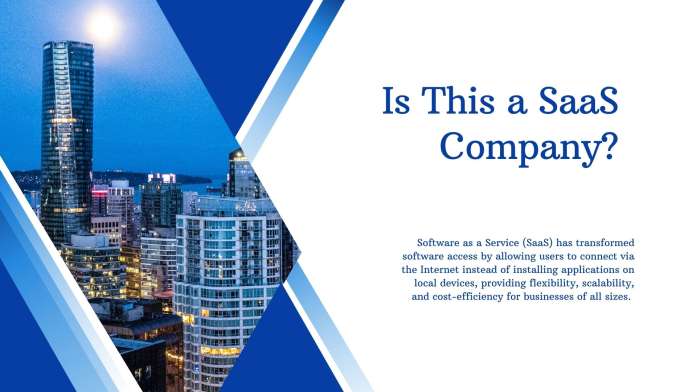Software as a Service (SaaS) has revolutionized how businesses and consumers access and use software. Unlike traditional software that requires installation on individual devices, a SaaS company enables users to access applications via the Internet. This cloud-based approach offers greater flexibility, scalability, and cost-efficiency, making it a popular choice for companies of all sizes.
Key Characteristics of SaaS Companies:
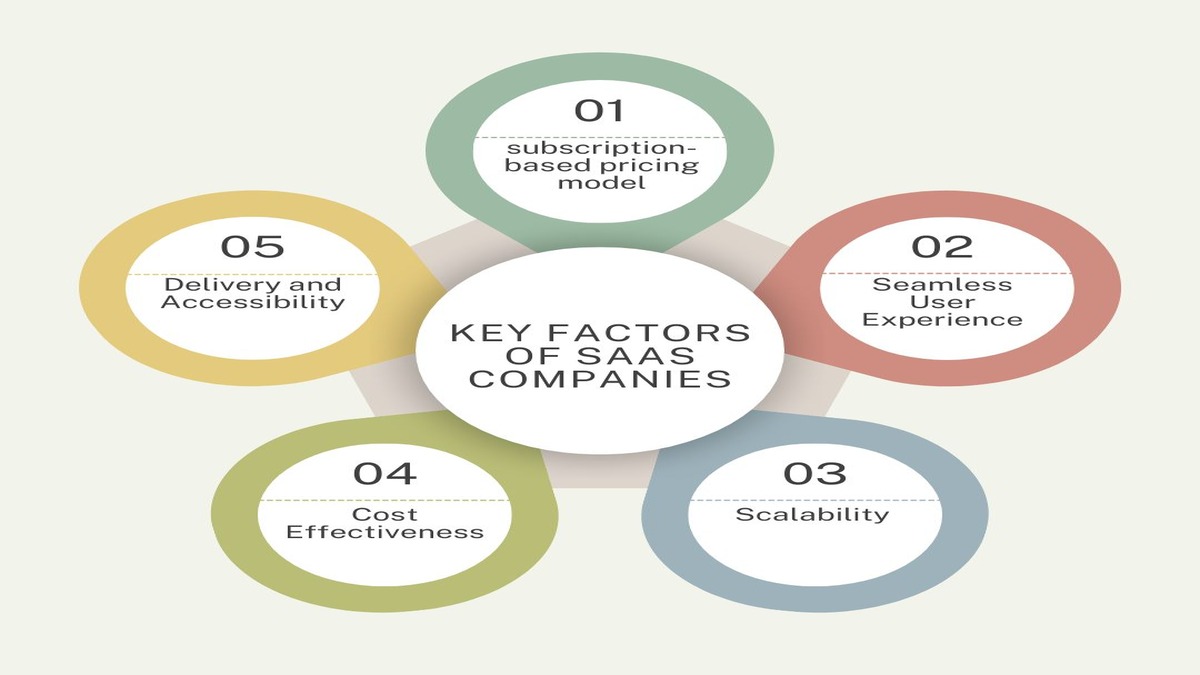
SaaS companies specialize in developing and delivering these web-based applications. They manage everything from software maintenance to updates and security, relieving users of these responsibilities. Common examples of SaaS products include customer relationship management (CRM) tools like Salesforce, collaboration platforms like Slack, and accounting software like QuickBooks Online.
One defining feature of SaaS companies is their subscription-based pricing model. Instead of purchasing a one-time software license, users typically pay a recurring fee—monthly or annually—to use the software. This model ensures a steady revenue stream for SaaS providers and predictable costs for users.
SaaS companies also emphasize seamless user experiences. With little to no need for installation and minimal setup requirements, these services can be quickly deployed across an organization. This ease of access facilitates faster adoption and greater user satisfaction.
To sum up, SaaS companies are at the forefront of delivering accessible, scalable, and cost-effective software solutions. Understanding their fundamental characteristics can help businesses and individuals make informed decisions when choosing technology providers.
Key Characteristics of SaaS Companies
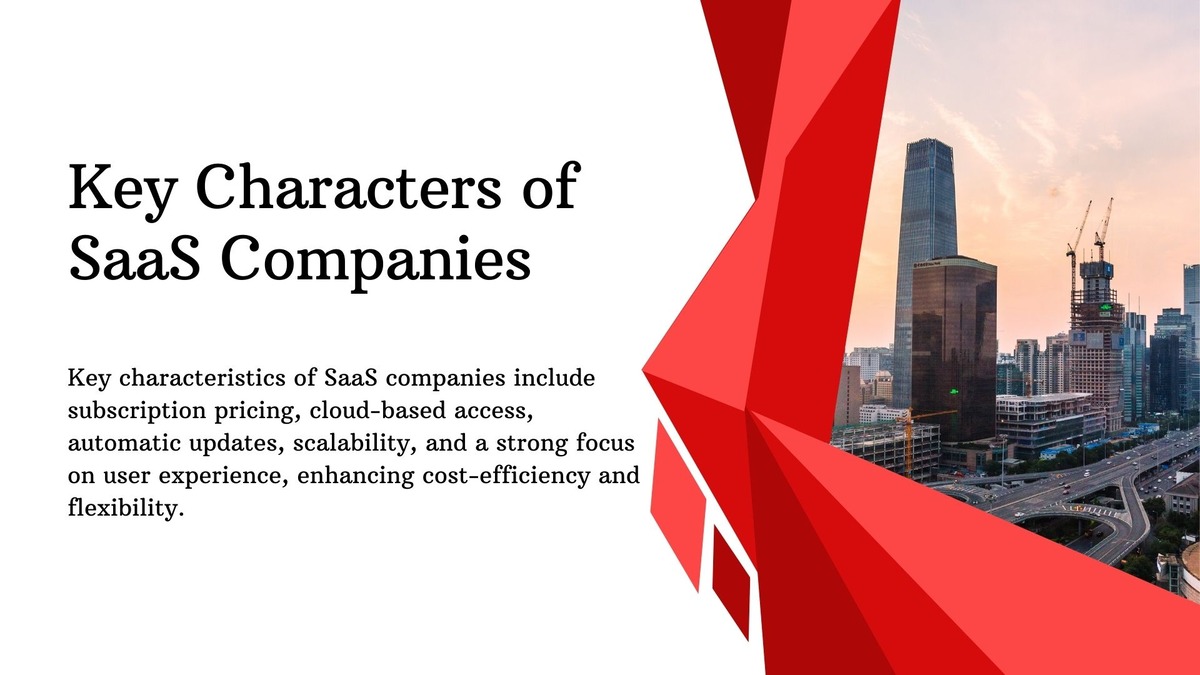
SaaS (Software as a Service) companies offer cloud-based software, accessible via the internet. One defining feature is that customers don’t need to download or install the software on their local devices. Instead, they can access it through a web browser, which offers both convenience and flexibility.
- Subscription-Based SaaS Pricing: Another key characteristic is the subscription-based pricing model. Unlike traditional software, which is sold as a one-time purchase, SaaS solutions are typically available through monthly or yearly subscription plans. This ensures a recurring revenue stream for the company and often includes regular updates and customer support within the subscription fee.
- Scalability: Scalability is also a hallmark of SaaS companies. SaaS solutions can easily scale up or down based on the user’s needs. Whether it’s adding new users or integrating additional features, customers can adjust their subscriptions without the need for extensive infrastructure changes.
- Automatic Cloud Updates: Automatic updates are another significant benefit. Since the software is hosted in the cloud, updates are deployed automatically without the customer needing to take any action. This ensures that users always have access to the latest features and security enhancements.
- Efficient Multi-Tenancy Architecture: Finally, multi-tenancy is a common trait of SaaS companies. This means a single instance of the software serves multiple customers, but each user’s data is securely isolated. This architecture helps in cutting costs and improving efficiency, while still maintaining a high level of service.
Understanding these key characteristics can help you quickly identify a SaaS company and appreciate the unique value they bring to modern software solutions.
Common Business Models of SaaS Providers
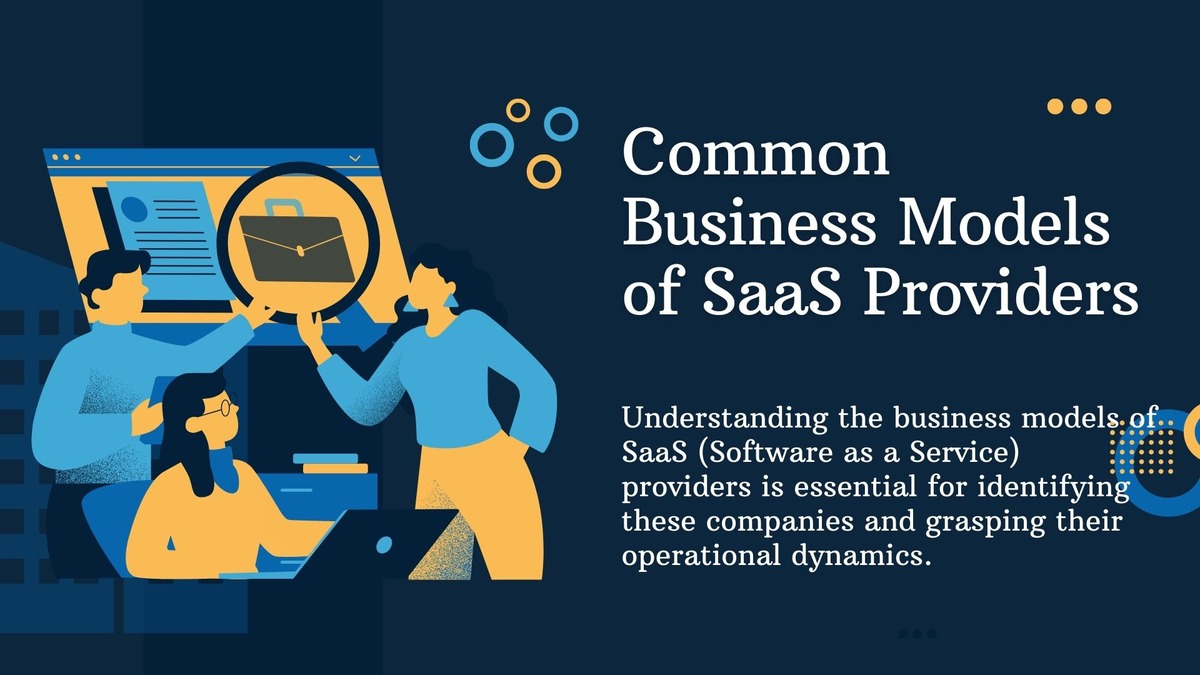
Understanding the business models of SaaS (Software as a Service) providers is essential for identifying these companies and grasping their operational dynamics.
- Subscription-Based Revenue Model: A prominent characteristic of SaaS providers is their subscription-based model. Customers typically pay a recurring fee—monthly or annually—to access and use the software. This model ensures a steady revenue stream and allows for ongoing software updates and support.
- Freemium Model for User Growth: Freemium models are also prevalent among SaaS companies. This approach offers basic functionalities free of charge, enticing users to upgrade to a paid tier for advanced features. The freemium model effectively widens the user base and generates leads with minimal marketing costs.
- Tiered Pricing for Customization: Another significant model is tiered pricing. SaaS companies often present multiple pricing options, tailored to different user needs or organizational sizes. Each tier offers unique features and benefits, enabling customers to select the plan that best suits their requirements and budget.
- Usage-Based Pricing Model: In addition, some SaaS providers adopt a usage-based pricing structure. This model charges customers based on their actual usage of the service, such as the number of transactions processed or data stored. It provides flexibility and scalability, making it ideal for businesses with variable usage patterns.
- Customized Pricing for Enterprises: Lastly, enterprise-level SaaS solutions often use customized pricing. These companies offer tailored solutions to meet the specific needs of large organizations, negotiating contract terms and pricing accordingly.
By recognizing these business models, identifying SaaS companies becomes more straightforward. Look for subscription fees, freemium options, tiered pricing, usage-based rates, and customized enterprise plans to pinpoint a true SaaS provider.
Market Indicators and Trends for SaaS Companies
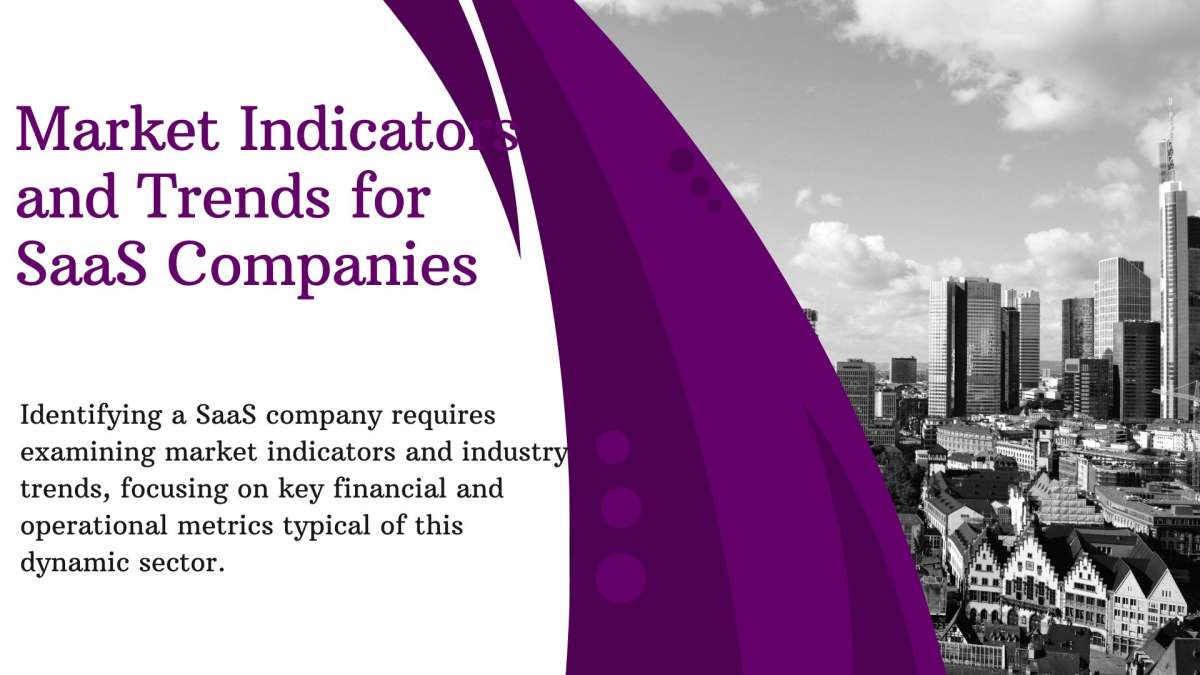
Spotting a SaaS (Software as a Service) company often involves scrutinizing the market indicators and industry trends that characterize this dynamic sector. As someone interested in the SaaS landscape, it’s essential to keep an eye on specific financial and operational metrics that SaaS companies typically exhibit.
-
MRR and ARR in SaaS Revenue:
One of the primary market indicators is the recurring revenue model. Look for companies that generate a significant portion of their revenue from subscription services. Monthly Recurring Revenue (MRR) and Annual Recurring Revenue (ARR) are key financial metrics that signal a SaaS business.
Growth rates are another critical factor. SaaS companies often experience rapid growth due to scalable cloud-based infrastructure and a broad market reach. High year-over-year revenue growth can be an indicator of a thriving SaaS company.
-
SaaS Metrics: Acquisition, Retention, and Trends:
Customer acquisition and retention metrics also provide vital clues. Successful SaaS companies usually have efficient customer onboarding processes and high customer retention rates, often evidenced by low churn rates. Customer Lifetime Value (CLV) versus Customer Acquisition Cost (CAC) ratios can offer insights into the profitability and sustainability of the business model.
Furthermore, market trends such as the increasing adoption of cloud computing, digital transformation initiatives, and a shift towards remote work can boost the demand for SaaS solutions. Emerging technologies like AI and machine learning integrated into SaaS offerings also suggest a forward-thinking company aligned with current market demands.
By paying attention to these market indicators and trends, you can effectively identify and evaluate SaaS companies in the ever-evolving tech landscape.
Evaluating a Company’s Software Delivery and Accessibility
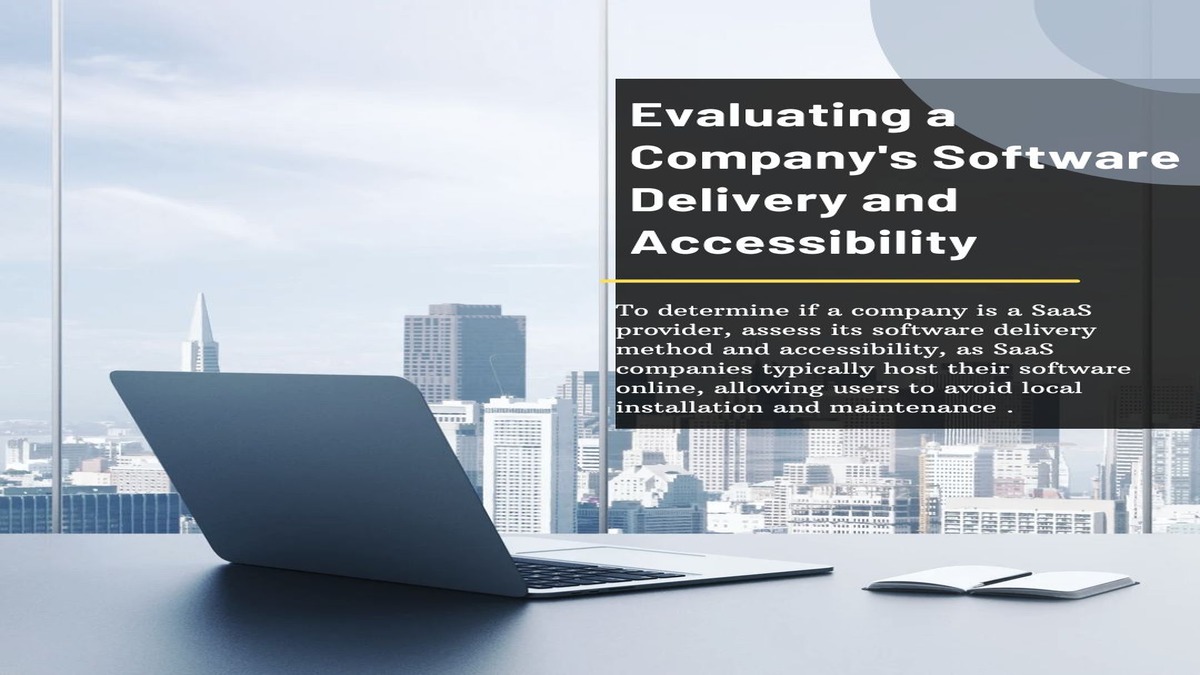
To identify whether a company is a Software as a Service (SaaS) provider, you need to evaluate how they deliver their software and its accessibility features. SaaS companies typically offer their software online, eliminating the need for users to install or maintain applications on local devices. Here are a few key aspects to look at:
- Web-Based Interface: SaaS applications are accessible through web browsers. Users can log in from anywhere with an internet connection, making the software highly accessible and convenient. Check if the company promotes this web-based access prominently on their website.
- Subscription-Based Billing: One hallmark of SaaS companies is their subscription-based pricing models. Customers usually pay a monthly or annual fee, which often covers updates, support, and maintenance. Look for pricing plans that reflect this recurring revenue model on their site.
- Automatic Updates: SaaS providers regularly update their software without requiring user intervention. Information about automatic updates or version control can help identify a SaaS company. These updates usually occur seamlessly, ensuring users always have access to the latest features and security improvements.
- Scalability Options: SaaS solutions are designed to scale according to user needs. Look for mentions of scalable infrastructure, which indicates that the software can handle varying quantities of users and data without performance loss.
- Security Features: Due to their web-based nature, SaaS companies emphasize security. Look for detailed information on encryption, data protection practices, and compliance with standards like GDPR or HIPAA.
By focusing on these delivery and accessibility features, you can effectively determine if a company operates as a SaaS provider, ensuring you make informed decisions whether as a user or an investor.
Conclusion and Practical Steps for Identifying SaaS Companies
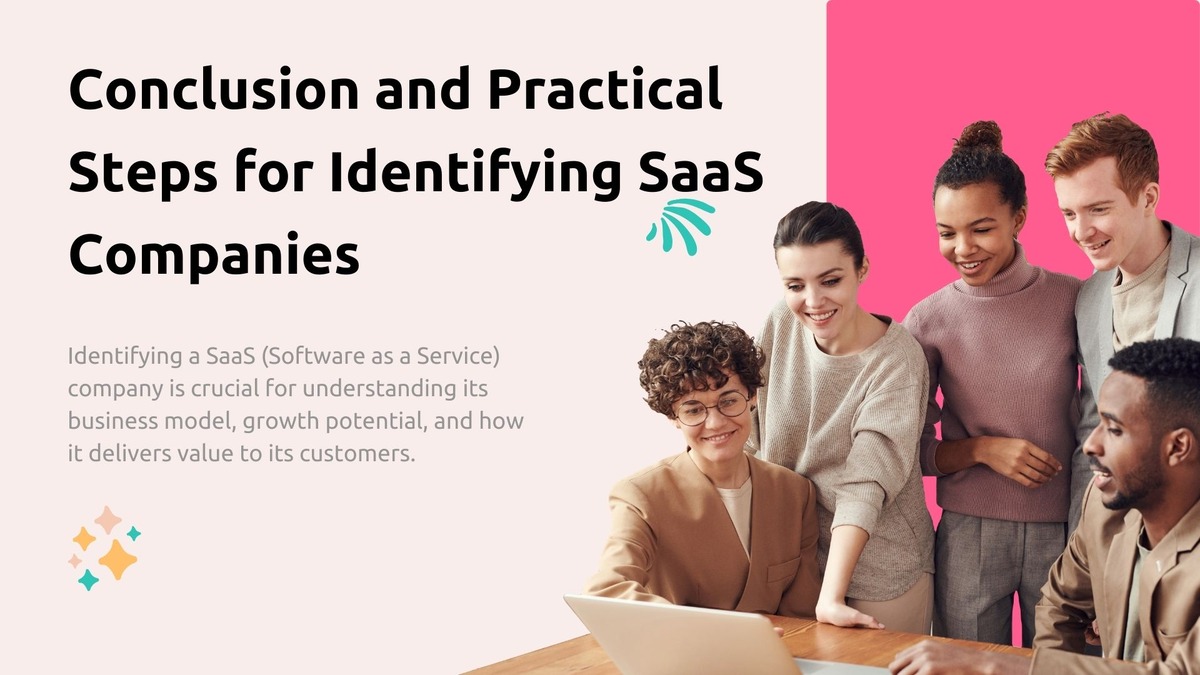
In summary, identifying a SaaS (Software as a Service) company is crucial for understanding its business model, growth potential, and how it delivers value to its customers. Here are some practical steps to help you pinpoint whether a company operates as a SaaS provider:
- Examine Their Website and Services: Start by visiting the company’s website. Look for mentions of cloud-based services, subscription models, or access through the internet. SaaS companies typically promote their software as a cloud service that’s accessible online.
- Check Subscription Options: SaaS companies usually offer their software on a subscription basis. Check if the company provides monthly or annual subscription plans. This is a key indicator of a SaaS model.
- Evaluate Software Delivery: Understand how the software is delivered. Is it downloaded and installed, or do users access it via a web browser? The latter is a hallmark of SaaS solutions, which are designed to be accessible from anywhere with internet access.
- Assess Hosting and Maintenance: SaaS providers host and maintain their software on their own servers or through cloud services like AWS, Azure, or Google Cloud. Look for information on who manages the software infrastructure, as SaaS companies handle updates and maintenance themselves.
- Customer Support and Training: Identify the support and training options available. SaaS companies often offer extensive online resources, webinars, and customer support to help users maximize the software’s benefits.
- Review Financial Statements and Filings: If available, financial documents and reports can offer insights. SaaS companies often highlight recurring revenue streams and significant investment in R&D for continuous software improvement.
By following these steps, you can effectively determine whether a company operates under a SaaS model, helping you make informed decisions about partnerships, investments, or utilizing their services.
Read More: Top 10 Popular SaaS Marketing Blogs in 2024

